Although many of these attacks are initiated with phishing incidents, insecure communication methods can make it easier for malicious actors to access key insights into patient records and sensitive information. When cyber incidents do occur, they can have far-reaching consequences for the healthcare provider involved. To help improve the safety of patient information and strengthen security, it’s important to identify vulnerabilities and understand where risks occur.
8 Security Risks in Your Healthcare Communication
Several potential security risks exist within the healthcare sector, each posing a threat to the integrity of a patient’s health information. Knowing where the risks lie can help you take proactive measures to address potential problems. Some of the most common risks include:
1. Data Breaches
Data breaches in healthcare occur when unauthorized individuals access sensitive patient records. These breaches often occur due to inadequate encryption practices, misconfigured systems, or even simple human error. Attackers may gain access to a large amount of sensitive data and information, including a patient’s medical history and financial details.
Such incidents result in significant regulatory fines and remediation costs, as well as irreparably damaging patient trust. To mitigate these risks, it’s essential to implement robust encryption protocols, conduct regular security audits, and enforce stringent access controls. Secure websites and effective healthcare communication platforms ensure your organization is safely connected and the risk of hackers is minimized.
2. Ransomware
Ransomware attacks have surged in frequency and severity within the healthcare industry. Cybercriminals deploy malware that encrypts critical data, effectively locking hospitals and clinics out of their systems until a ransom is paid. The disruptive nature of ransomware can halt patient care, delay treatments, and jeopardize life-saving procedures.
Proactive measures include maintaining regular, secure backups and network segmentation to help contain potential outbreaks. Additionally, comprehensive incident response planning and effective communication can help organizations recover swiftly from an attack.
3. Phishing
Phishing remains one of the most common methods by which cybercriminals infiltrate healthcare systems. Attackers craft deceptive emails or messages that appear to come from trusted sources, tricking staff into revealing credentials or downloading malicious attachments. It can happen on unsecured communication technologies, websites, and within secure networks. Continuous training and campaigns to raise awareness among healthcare employees are essential. Implementing advanced email filtering solutions and multi-factor authentication (MFA) further reduces the likelihood of successful phishing attempts.
4. Unsecured Medical Devices
As healthcare becomes more interconnected, some medical devices—from imaging systems to wearable health monitors, to check-in kiosks—often connect to hospital networks. Unfortunately, many devices lack robust security measures and are vulnerable to exploitation. Once compromised, unsecured operational technology (OT), Internet of Things (IoT), or Internet of Medical Things (IoMT) devices can serve as entry points for broader network attacks, exposing patient data and operational systems.
The same mentality applies to unsecured communication—i.e., SMS, text messaging, voicemails, and other messaging done through personal cell phones or consumer messaging applications that are not compliant with HIPAA standards. Although proper configuration and network segmentation can help mitigate risks, sharing sensitive information should ONLY be done on secure, approved devices, and through certified HIPAA-compliant healthcare communication platforms is important.
5. Insider Threats
Insider threats encompass malicious employee activities and inadvertent errors that expose data. Disgruntled or well-meaning employees can become weak links if they fail to follow security protocols. They’re particularly challenging because they occur within the trusted network perimeter.
This is highly common in decentralized, post-acute care environments, such as home healthcare, where large networks of contracted, part-time, and full-time employees communicate daily with networks of third-party care partners, patients and families, and referring organizations. This creates many points of daily security exposure, even if accidental. Many of these organizations continue to use non-compliant personal cell phones to coordinate care daily.
To mitigate this risk, healthcare organizations should adopt the principle of least privilege, provide regular employee training, and closely monitor user activity for any unusual patterns. Implementing a robust risk management plan and data loss prevention (DLP) solutions helps detect and prevent unauthorized access to or exfiltration of sensitive data.
Additionally, using a communication and collaboration platform with organizational controls reduces the security risk when an employee leaves the organization. The organization can remove the employee from all communications and linked groups just by removing them from the organization.
6. Third-Party Vendor Vulnerabilities
Healthcare organizations rely on numerous third-party vendors for services such as cloud storage, software development, and even maintenance of medical devices. All third-party vendors who have any access to patient healthcare information, even if small and infrequent, should provide proof, often in the form of letters of attestation, of completing an annual audit and have been certified as HIPAA compliant. A vulnerability in any of these third-party systems can directly impact the security of patient data.
Therefore, it is essential to conduct thorough due diligence when onboarding vendors and include information security and compliance clauses in contractual agreements, including having them sign Business Associate Agreements (BAAs). Third-party vendors should also utilize secure HIPAA-compliant communication in healthcare dealings and adhere to stringent security standards.
7. Telemedicine Shortcomings
The rapid adoption of telemedicine has significantly increased the accessibility of healthcare, but it has also introduced new vulnerabilities. Telemedicine platforms may expose sensitive patient data during virtual consultations if it is not properly secured. Common issues include weak encryption, insufficient authentication protocols, and potential vulnerabilities in video conferencing software. The communication channels and transmitted data must be protected; therefore, end-to-end encryption, multi-factor authentication, and regular security assessments should be implemented.
8. Software Issues
Software vulnerabilities, whether caused by outdated applications or misconfigurations, can serve as exploitable entry points for cyber attackers. Healthcare systems are particularly vulnerable when they rely on legacy software that no longer receives updates or security patches. Software must be regularly updated to prevent exploitation, and thorough vulnerability assessments must be conducted.
The Effects of Cyber Threats and Weak Network Security
The financial and reputational impacts of cyber incidents on healthcare are staggering. The average data breach in 2024 was $4.8 million, though some incidents can cost healthcare systems even more when factoring in lost revenue, legal fees, and remediation expenses. Fines related to HIPAA violations, even if unintentional, begin at $50,000 per incident and increase from there. Beyond the monetary cost, these breaches can also cause the following incidents:
- Delayed treatments, misdiagnoses, or even life-threatening situations.
- Significant inefficiencies in daily operations.
- Loss of patient trust and negative publicity.
- Damage to an organization’s reputation.
- Issues with patient retention and future partnerships.
- Violations of healthcare regulations like HIPAA.
- Increased scrutiny from regulatory bodies.
- Lawsuits and long-term legal battles.
Poor communication and safety in the healthcare industry have several adverse effects. Although some healthcare data breaches are unavoidable, it’s important to implement specific security controls to mitigate the risks as much as possible.
How to Safeguard Protected Health Information and Patient Safety
Protecting sensitive patient information requires a multi-layered approach that encompasses technology, processes, and personnel. To help you avoid potential breaches, here are some features to strengthen your healthcare communication systems:
- Implement End-to-End Encryption — Secure both data in transit and at rest with robust encryption standards to ensure that even if data is intercepted, it remains unreadable.
- Adopt Multi-Factor Authentication (MFA) — Enhance login security across systems to reduce the risk of unauthorized access, even if credentials are compromised. Multi-factor authentication is one of the best practices for helping reduce the risk to patient anonymity.
- Conduct Regular Security Audits and Vulnerability Assessments — Periodic reviews help identify and address gaps before cybercriminals can exploit them.
- Invest in Employee Training — Human error is the leading cause of data breaches, and while this can be challenging to control, ineffective communication can increase risk. Regular cybersecurity training programs help staff recognize phishing scams, social engineering tactics, and other common threats.
- Secure Medical Devices — Ensure that all medical devices are updated with the latest firmware, use strong passwords, and are isolated from general networks where possible.
- Strengthen Third-Party Oversight — Establish rigorous security requirements for all vendors and routinely evaluate their compliance with your security protocols, including HIPAA compliance and certification.
- Enhance Telemedicine Security — To protect virtual patient interactions, utilize platforms that incorporate proven security measures, including encryption and secure user authentication.
- Develop a Comprehensive Incident Response Plan — Being prepared with a well-documented plan can minimize the damage in the event of a breach and help ensure a swift recovery.
By proactively addressing vulnerabilities, healthcare providers can significantly reduce the likelihood of cyber incidents and protect the integrity of patient data. The effects of poor communication can also be decreased by integrating transformative healthcare communication platforms.
About the Author
Kartik Shah is the Co-founder and Chief Operating Officer at Skyscape, where he plays a pivotal role in overseeing HIPAA and SOC2 security compliance. With a wealth of experience as a technology entrepreneur, leader, and visionary, Kartik has a proven track record in the healthcare sector. Kartik’s technical interests lie in Clinical Communication and Collaboration (CC&C) and the development of cutting-edge telehealth solutions. His educational background includes a Bachelor of Electrical Engineering from Victoria Jubilee Technical Institute in Mumbai, India, and a Master’s degree in Computer Engineering from the University of Southern California (USC) in Los Angeles. With his expertise and leadership, Kartik continues to drive innovation and excellence at Skyscape, ensuring the delivery of secure and effective healthcare technology solutions.
A Bit About Buzz
Buzz is a HIPAA-secure platform that simplifies real-time on-the-go communications between all stakeholders in an organization’s healthcare ecosystem (administrators, operations, billing, payors, providers, and patients). It supports commonly used communication modalities, including texts, dictation, private calls, audio, images, reports, and video sharing. By consolidating these features into a single platform, Buzz eliminates the need for multiple communication tools, reducing confusion and burnout, and enabling healthcare teams to focus on delivering exceptional patient care.
Learn more about Buzz features or contact us to discover why Buzz is the most feature-rich, easiest to adopt, and most cost-effective solution, with pricing comparable to a cup of coffee.

